| Architect |
Designed by: Rendel, Palmer and
Tritton for the Greater London Council Built by: a Costain/Hollandsche Beton Maatschappij/Tarmac Construction consortium Gates built by: Cleveland Bridge UK Ltd |
| Date
Built |
Completed
1982 |
| Location |
Silvertown in
East London |
| Description |
|
|
The Thames is a tidal
river flowing through the heart of a major
metropolitan area. According to the
Thames River Boat website, "Near
to the new and full moons (about every
two weeks) we have spring tides when
there is a rise and fall between low
tide and high tide of up to 8m (26')."
As the river passes through the heart of
the city it is contained between
substantial embankments but the danger of
a significant flood and its impact on the
city's infrastructure is ever
present. In 1974 work began to
address the concern by constructing this
barrier across the river east of the city
at Silvertown. The plan called for
the construction of one of the largest
moveable flood barriers in the world
spanning 520 metres with 10 steel gates
designed to hold back potentially
destructive flood tides.
  The barrier was
completed in 1982 and used for the first
time in 1983. The official opening
ceremony, attended by Queen Elizabeth,
didn't happen until 1984. It is made
up of a series of piers between which are
rotating gates. Six of the gaps in
the barrier are navigable. Four of
those gates are 61 metres wide and two are
30 metres wide. When the barrier is
open, the gates sit on the river
bed. When the barrier is closing,
the mechanism rotates the gates into
position. Each of these central
gates is 20.1 metres high and weighs 3,700
tonnes.
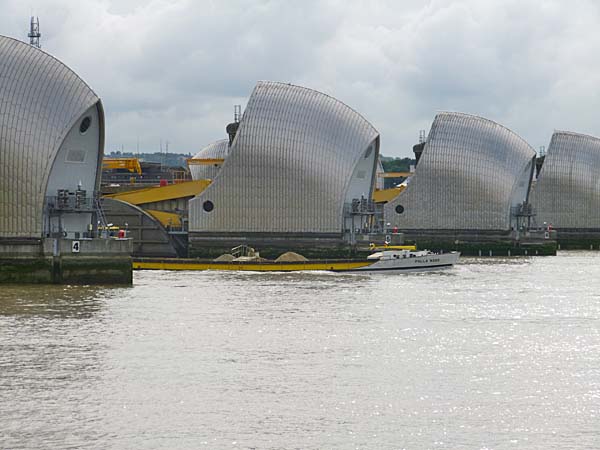 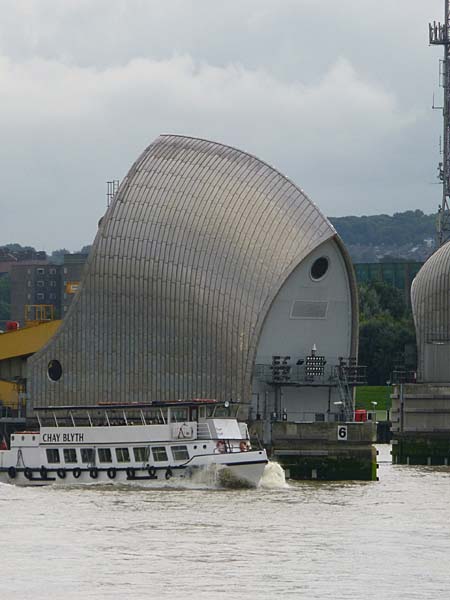 Closer to shore there four more gates that are each about 30 metres wide. These channels are not navigable. 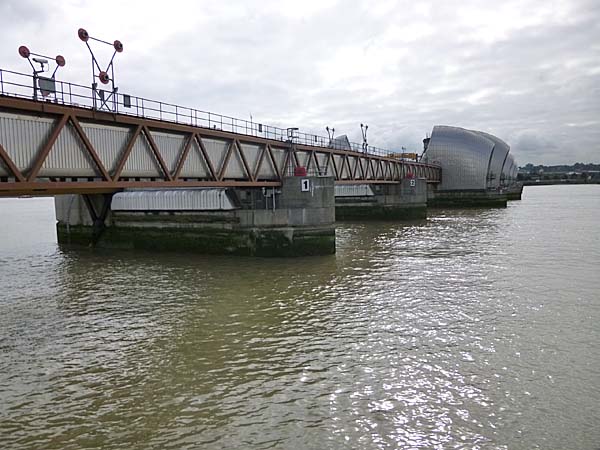 The barrier is
operated by The Environment Agency and
controlled from a tower on the south
shore.
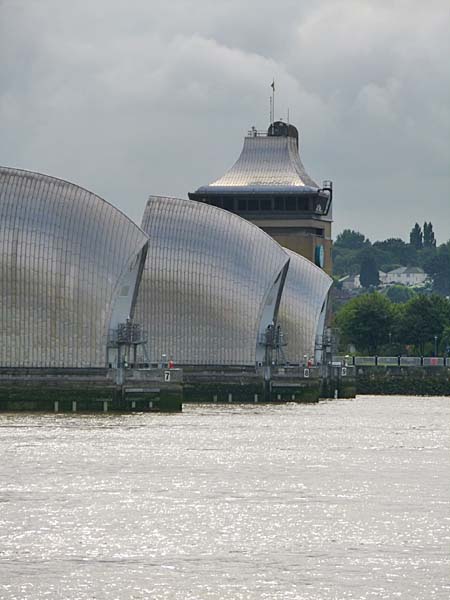 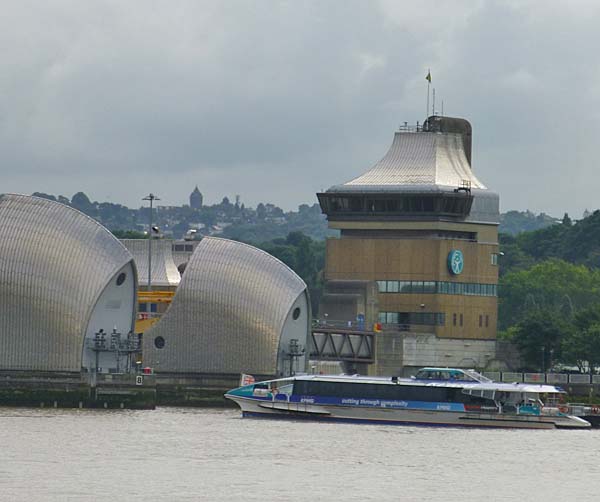 In 2000 a park, called
the Thames Barrier Park, was
created on the Silvertown side of the
river.
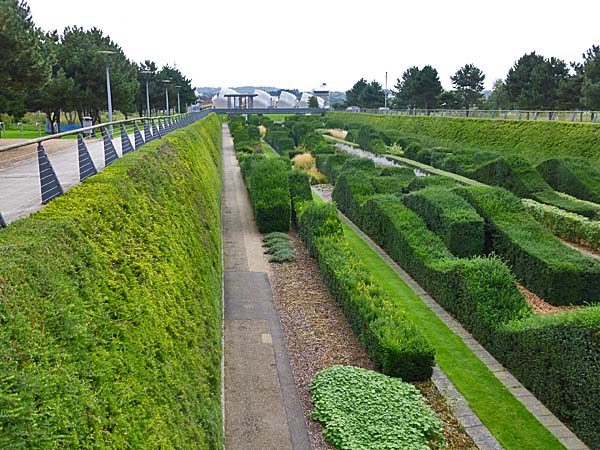 The london.gov.uk website describes it as providing, "... a focal point for Newham residents and attraction for visitors to the area. The riverside area was redeveloped and landscaped with fountains, family areas, flower gardens and tended lawns. The park has helped to significantly regenerate the area. ... One of the park’s most imaginative and attractive features is The Green Dock (see above & below) which was created by renowned horticulturalist Alain Cousseran and Alain Provost. A 1km circuit of the boundary paths takes you to the Visitor Pavilion Coffee Shop where refreshments are available." 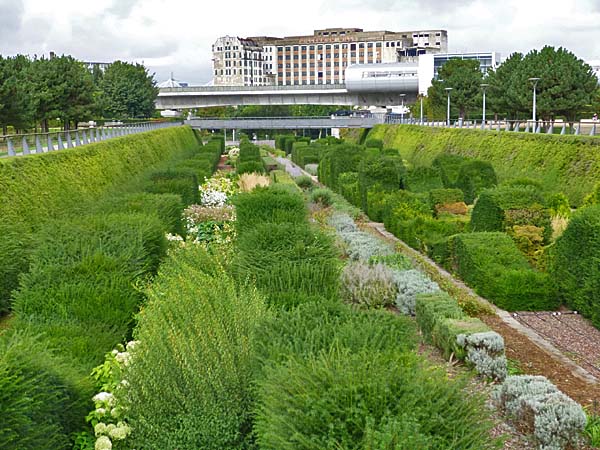 At the end of the Green Dock is a Pavilion of Remembrance, intended to honour the memory of local residents who lost their lives during WW2. When we visited it in 2013, it was closed off to the public over concerns about safety. 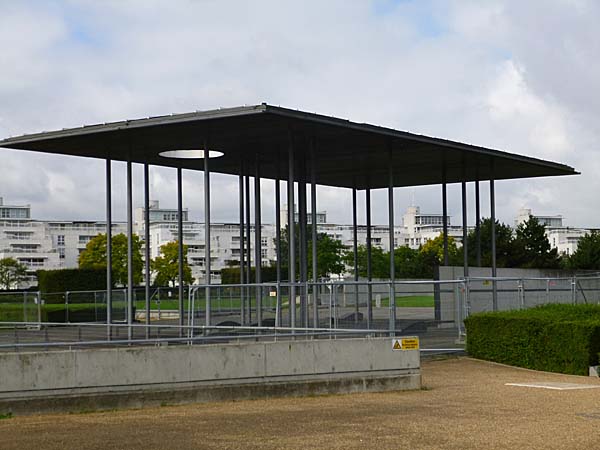 |
|
|
The
Thames Barrier, London
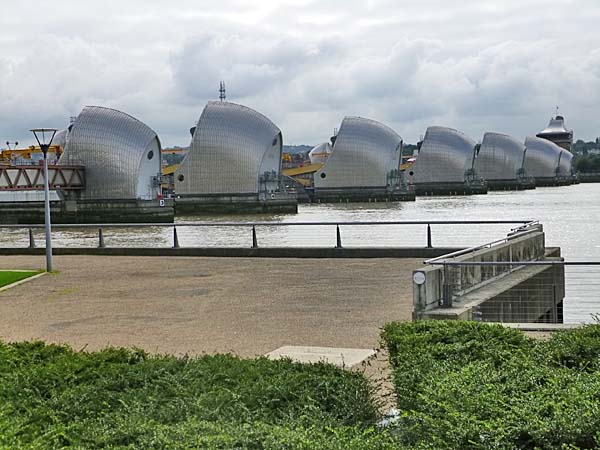 |
